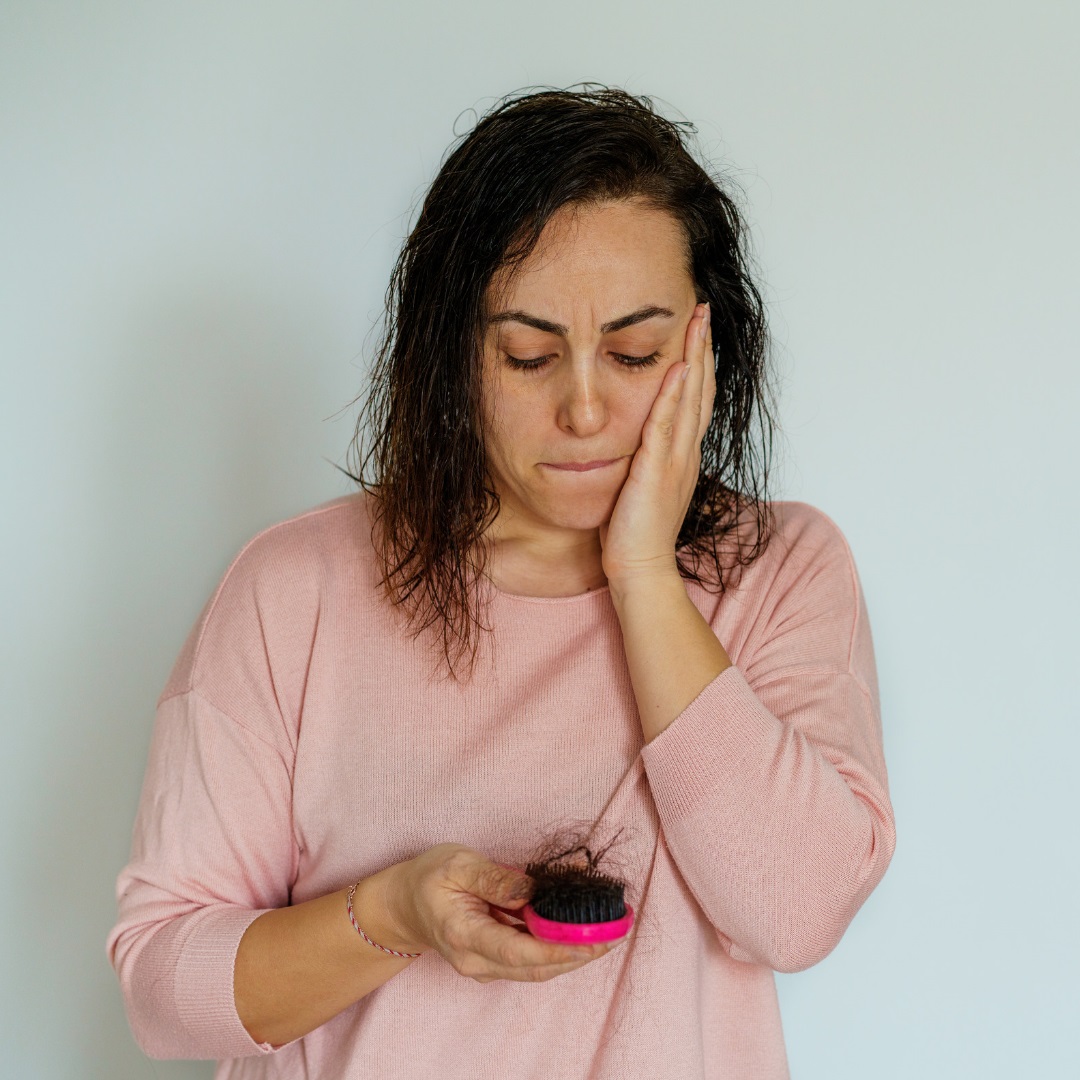Table Of Content

Dr. Liji Thomas is an OB-GYN, who graduated from the Government Medical College, University of Calicut, Kerala, in 2001. Liji practiced as a full-time consultant in obstetrics/gynecology in a private hospital for a few years following her graduation. She has counseled hundreds of patients facing issues from pregnancy-related problems and infertility, and has been in charge of over 2,000 deliveries, striving always to achieve a normal delivery rather than operative. A small number of patients had long-term alopecia without any clear underlying disease process being identifiable. Clinical awareness of this symptom probably needs to rise, especially since only the most severe cases may have presented to the clinician.
Addressing shortfalls through diet and supplements: Does it help hair growth?
Following the PRISMA Extension for Scoping Reviews, MEDLINE and EMBASE were searched for all peer‐reviewed articles with relevant keywords including “Alopecia,” “Telogen Effluvium (TE),” and “COVID‐19” from their inception to November 20, 2021. Visiting your state or local health department’s website can help you find a testing location. If you have any questions or concerns about finding a testing location, talk with your healthcare provider. However, sometimes the hair that’s shed isn’t replaced with new hair, eventually leading to hair thinning and bald patches. We’re currently in the middle of a pandemic due to the new coronavirus, SARS-CoV-2. Besides a multivitamin, taking certain vitamin supplements can also help boost key nutrient levels that promote hair regrowth.
Dr. Chinta Sidharthan
Hair loss after COVID-19 probably isn't caused by the virus attacking hair follicles, doctors say. Instead, they think it's most likely a reaction to the physiological and emotional stress brought on by the disease. A total of 26 articles, with 9 observational studies and 17 case reports or series (a total of 58 cases), were included.

How does stress affect hair?
Another issue of hair fall seen during the pandemic by the authors is a perceived increase in hair fall or pseudoeffluvium. In most of these patients, the assessment revealed a negative hair pull and normal trichoscopy. Most of the patients responded to reassurance and explanation given to them. The content published in Cureus is the result of clinical experience and/or research by independent individuals or organizations. Cureus is not responsible for the scientific accuracy or reliability of data or conclusions published herein. All content published within Cureus is intended only for educational, research and reference purposes.
The demographics data, signs and symptoms of COVID-19, past medical history, drug history, and dermatologic manifestation were reviewed by convenience sampling. Also, disease severity based on radiological and laboratory findings were collected from their medical records. Other information included hair loss, family history of hair loss, daily life habits, theory of bathing, nutrition etc, based on a questionnaire completed by phone after discharge.
15 Best Shampoos for Thinning Hair (Tests & Reviews 2024) - Cosmopolitan
15 Best Shampoos for Thinning Hair (Tests & Reviews .
Posted: Wed, 03 Apr 2024 07:00:00 GMT [source]
What are other more common or typical symptoms of COVID-19?
The participants largely represented the relative populations of 48 U.S. states and were recruited without specifying COVID-19 as a criterion in the recruitment advertisements. Healthy individuals were included in the study if they had no other disorder, such as a neurodegenerative disease or head trauma condition that could impact the ability to smell and taste. The COVID-19 pandemic has been successfully contained after the development of various vaccines and worldwide efforts to vaccinate large parts of the population. However, post-COVID-19 condition (PCC), commonly referred to as long coronavirus disease (long COVID), is an ongoing public health concern. While common triggering factors for TE are febrile disease, severe infection, and nutritional deficiencies, which are common in COVID-19 patients, it is worth evaluating the prevalence of TE.
Expanding research and clinical options for children with cancer
Overall, the connection between COVID-19 and dermatologic symptoms, those that affect the skin and hair, remains somewhat unclear. “We’re still learning in real time about things that occur after the virus or the vaccine, and it’s hard to delineate when things are definitive versus theoretical,” Dr. Bhanusali says. In other words, our understanding of the virus, including what we can do to mitigate its side effects, is constantly evolving. Even though many things about COVID-19 are still shrouded in mystery, our understanding of the illness that completely changed life as we know it is growing, postvirus hair loss included. According to Healthline, other common types of alopecia include traction alopecia, telogen effluvium, alopecia areata, central centrifugal cicatricial alopecia (CCCA), and lichen planopilaris (LPP). Telogen effluvium by itself could be a source of stress and may further propagate hair fall in the affected patients.42This could be another source of hair fall observed in patients post recovery from COVID-19.
Special Health Reports
It would be important to consider here that underlying nutritional deficiencies may contribute or exaggerate the effluvium post COVID. Telogen effluvium (TE) is one of the most popular alopecia in women, provoked by stressful events, trauma, illness, malnutrition, hormonal imbalance, and drugs. The pattern of hair loss in TE is diffuse, without scars, and involves less than half of the hair. It occurs 2–3 months after the stressful condition, and it is occasionally self-limiting.
Articles considered eligible were subsequently evaluated in full length. Our experts continually monitor the health and wellness space, and we update our articles when new information becomes available. You can take several steps in your day-to-day life to prevent the spread of COVID-19. These include frequent handwashing, practicing physical distancing, and wearing a mask. Use these professionally produced online infographics, posters, and videos to help others find and prevent skin cancer. Both the CDC and the FDA warn against treating this common childhood condition on your own with non-prescription treatments.
“If someone is deficient in vitamin D or iron, we know that their hair can shed. So, that’s why we say that with a multivitamin, you can make sure you’re getting enough nutrients that you need for your hair,” Dr. Khetarpal says. In this interview, Dr. Fu Wei, Director of Quality Management Department at BGI Genomics talks to AZoMedical about achieving and maintaining ISO/IEC and BS certifications.
Can Stress Cause Hair Loss? - The New York Times
Can Stress Cause Hair Loss?.
Posted: Tue, 11 Jul 2023 07:00:00 GMT [source]
Little is known about the possibility of hair loss in patients recovering from coronavirus disease 2019 (COVID-19). Though this is a minor loss, it feels devastating to many individuals and has been studied by several researchers. More than a year into the pandemic and we have learned to expect the unexpected and are still uncovering different ways the SARS-COV2 virus is affecting humans. These symptoms occur from either direct damage to your cells or your body's natural response to fighting off the infection. Many of these symptoms are normal and similar to what we see with other types of infections, while others the medical community is still learning about.
Furthermore, the effect size of the patients reporting a continued loss of smell was insignificant, indicating a progressive improvement in all chemosensory functions. Medical histories of the participants consisting of COVID-19 diagnosis dates and methods used to diagnose, such as antibody and polymerase chain reaction (PCR) tests, were obtained. Furthermore, since self-reports of loss of taste or smell can be inaccurate, there is a need to assess the occurrence of taste dysfunction in PCC quantitatively. However, the condition affects various organ systems, with severe cases involving cardiovascular and renal complications and neurological symptoms such as brain fog or inability to concentrate.





















